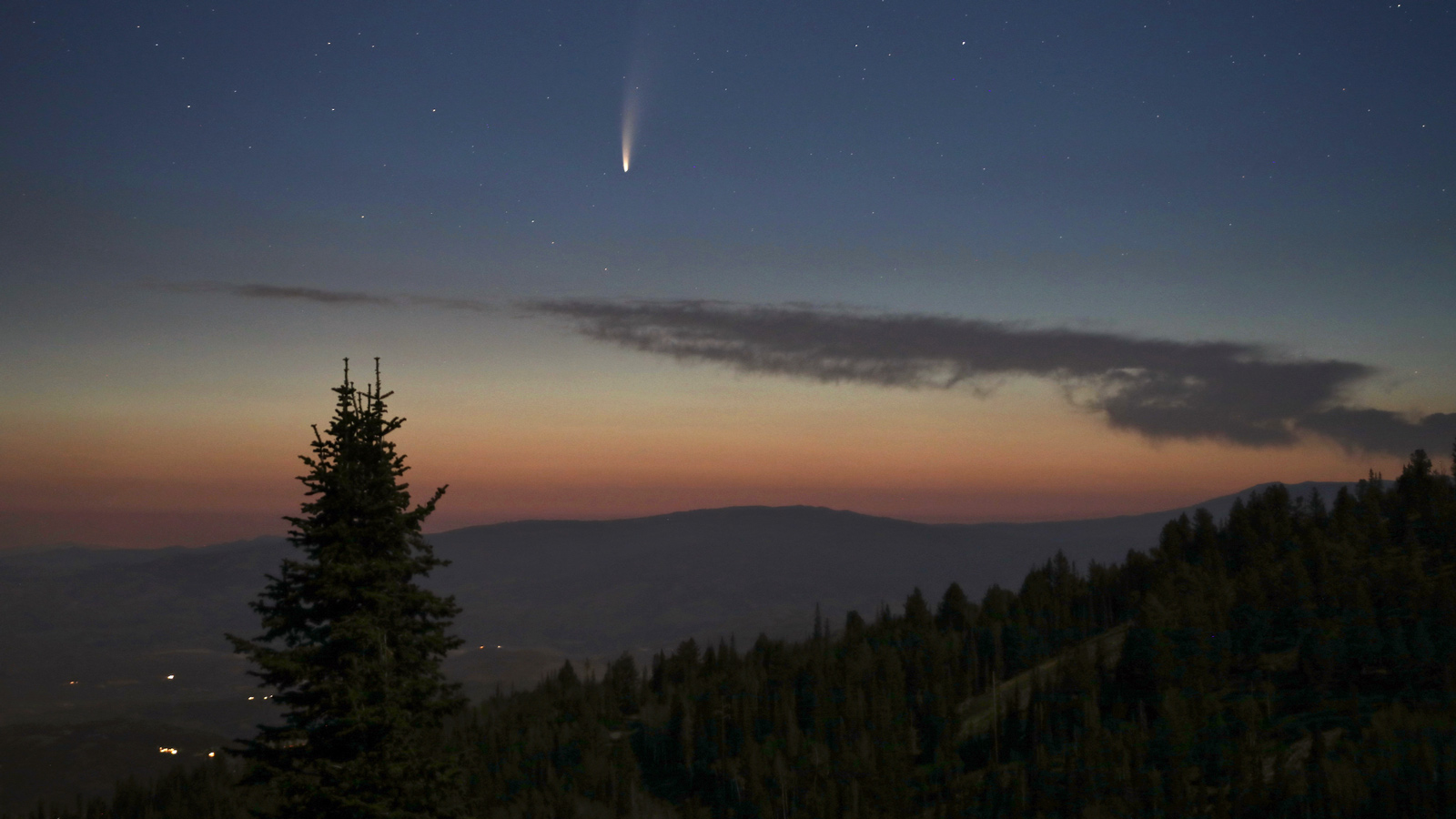Comet NEOWISE passed closest to the Sun on July 3 and will pass closest to the Earth on July 23. It is the brightest comet visible from Minnesota in over 10 years. It should be easy to spot (under reasonably dark-sky conditions) at least through the duration of July, and probably beyond that, as it passes under the bowl of the Big Dipper (see figure below). Although it is visible naked-eye, look at it with binoculars or a telescope if possible – the view of the tail will be much better.

Note 1: The orientation of the Big Dipper and its distance to the horizon in the figure will depend on your location on the Earth and the time of night you are observing. Right now the comet is best seen just after it gets fully dark – about 10:30 p.m. – when it is highest in the sky. Be sure to select an observing site as far from city lights as possible and one which has a good view of the northern horizon. The comet will appear in the northwest right after dark and will swing around to the northeast before sunrise.
Note 2: If you are out observing, also take time to look at Jupiter and Saturn as well. They are close together above the southeastern horizon just after sunset. If you are using binoculars or a telescope, you might be able to see the 4 largest moons of Jupiter and/or the rings of Saturn.
NEOWISE picture taken by Teresa Hofer of Badlands Observatory, one of our South Dakota Space Grant Consortium affiliates. The comet is reflecting off Bear Butte Lake at Bear Butte State Park located just northeast of the Black Hills of South Dakota. (Imaging details: Panorama in portrait mode with 50mm lens. Six images for the sky; tracked and shot at f/2.8 ISO 1000 for 2 mins each. Foreground is 9 images, untracked, shot at f/4.5 ISO 2000 for 2 mins each. 7/17/20.)
Related Links

